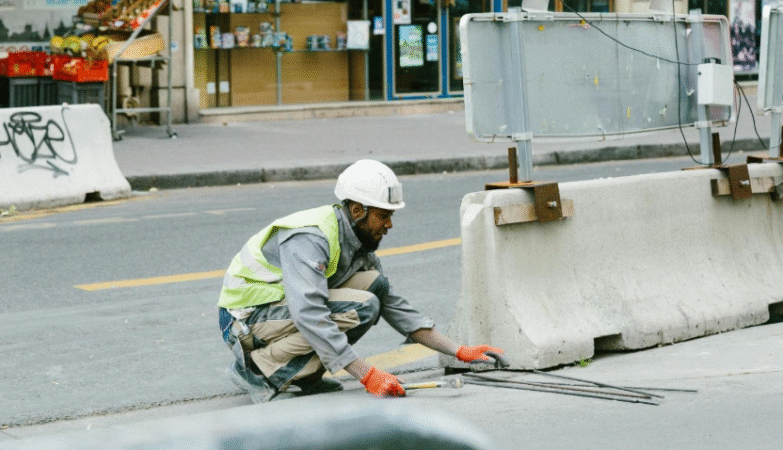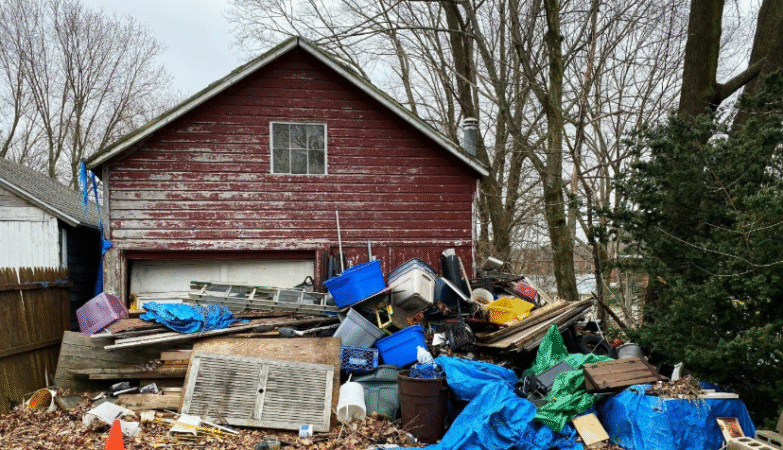Most of the time, you don’t think of traffic until it gets loud—like when your windows rattle, you get woken up at bedtime, or your call drops out. If you live along an arterial or busy collector, you might wonder whether it is the road itself that is really your trouble. The short answer: yes, the design of the surface contributes to noise, and the right mix of asphalt can reduce it. It is not a mute button, but it is a legitimate tool to ask about when your town talks about street work or asphalt re-surfacing.
How Surface Texture Affects Sound
Most neighborhood noise at a constant speed is tire-pavement noise. As tires roll, air is squeezed in and out of tiny ports and tread. Sharper, sealed surface textures “whoosh” loudly; more open, uniform textures give that air somewhere to escape.
While it’s easy to think of just one surface type as perfect let’s also consider how a few factors combine to create what you hear:
- Macrotexture: The width of the roughness that controls drainage and friction; too coarse will be harsh.
- Microtexture: The fine sandpaper feel that provides friction, but also absorbs some of the high-frequency hiss.
- Void space: Air pockets that are interconnected so trapped air can escape instead of being released as the tire pops it.
- Uniformity: When the lane has a uniform texture there is nothing sudden to detect as “buzz” for your ear.
“What is OGFC?”
OGFC (Open-Graded Friction Course), is a thin, porous asphalt layer that has a lot more connected voids than standard asphalt mixes. Water drains through and out the side, which reduces wet traction and softens the tire hiss noise since the air can move rather than explode against the surface. You might see OGFC on more heavily traveled corridors where speeds tend to remain constant (not accelerating or braking) which matters when it comes to water shedding in order to maintain traction. The mix relies on a stone skeleton and just enough binder to glue it together without clogging pores; it performs best on a solid base and with regular maintenance of the pavement.
Testing Decibel Reductions
How much quieter can it get? Field crews will typically use On-Board Sound Intensity (OBSI) or Close-Proximity (CPX) trailers to measure tire–pavement noise based on set speeds. Roadside meters can collect before-and-after readings for the immediate area, provided weather, speed, and traffic mix are consistent. Read more on this page.
You should see noise reductions of about 2 to 5 dB(A) across a number of projects immediately after installation if measured in comparison to each site’s older, cracked, or coarse surfaces. You can think of 3 dB as roughly half of the sound energy – a reduction at this level is often described as “clearly quieter” to most people. As soon as the pores start to clog or the OGFC starts to ravel, the benefit will decrease; routine maintenance will keep it looking new, and cleaning and maintenance will protect the benefit.
Installation Challenges
If you are thinking about using a quiet surface on your street, performance is in the details. Porous mixes offer a tighter construction window and require optimal weather conditions. The crews must reach the right temperatures, compaction, and drainage, so that water does not sit above the layer. Standard sealcoating is not used on porous surfaces because it will plug up the very voids that are designed to maintain the quiet. A paving contractor will explain those tradeoffs.
These are practical obstacles your public works crew or contractor will count:
- Budget and timeline: Supply costs for unique materials, particularly when they include a fine–aggregate with a quick molding period for fresh construction, and sharply limited paving days due to weather, can escalate costs for already highly limited opportunities.
- Climate: Climate can affect ultimate performance, particularly with porous layers, in freeze-thaw. De-icers and sanding can lead to debris or enclosure and reduce the longevity of porous layers.
- Drainage: Drainage design and installation that allows gutters and outlets to direct water away from the sub-base and away from your roadway will lose sound and safety benefits.
- Additional features to improve service life: After some period of use, once pores in the mix are closing with debris or stone begins to loosen, some decibel gain will dissipate. However, scheduled or planned sweeping, along with other factors, will maintain service life of the low-noise surface.
Community Case Studies
Suburbs that are under or next to a four-lane corridor generally report the largest benefit in all noise mitigative discussion. When a coarse, chip seal, or pavement strip has been replaced with a friction pavement surface, that constant engine hiss will generally be reduced at 35-45 miles per hour. While engine and braking noise will still occur, the background noise will generally be moderated…especially if trucks are using outside lanes and speeds are somewhat consistent.
If you are considering a contextualized improvement in your area, you could visit a road construction company Vacaville to find out where OGFC or other low-noise surface mixes have been employed and how those mixes have weathered:
Finally, ask what level of sound they saw in year 2 and year 5. For example, what routine/sweeping or maintenance works best with keeping open pores of the mixture surface. Did traffic patterns change across the corridor? The most responsive comparisons to look for in this analysis suitable sampling will align speed, vehicle mix, and wind condition so that you can identify a sound mitigated from a hastily quiet afternoon between traffic incidents. For your own road frontage, understand that curb-to-curb driveway paving will generally not alter roadway noise differences, but will lessen your own turn-in impact noises.
Ultimately, we know that vehicles only travel relatively slow on quiet road surfaces-not faster than normal pace, just less noise-and how the surfaces perform to mitigate impact noise from any moving vehicle are a collective effort. No different with variations in surface profiles, mix design, and the basic road maintenance carried out on an ongoing basis that will vary with respect to driving speeds and truck routes, catering to user rehab or life expectancy.
In situations where your city is considering a mill-and-fill, ask about noise-related goals along with safety issues and drainage. Link the improved noise mitigation feature with an asphalt mixture design that considers ambient climatic situation, and maintenance program that includes a municipal coordinated sweeping program! You can achieve a quieter street without overpromising, with the right plan, and through the assistance of paving and pavement maintenance industry professionals.







